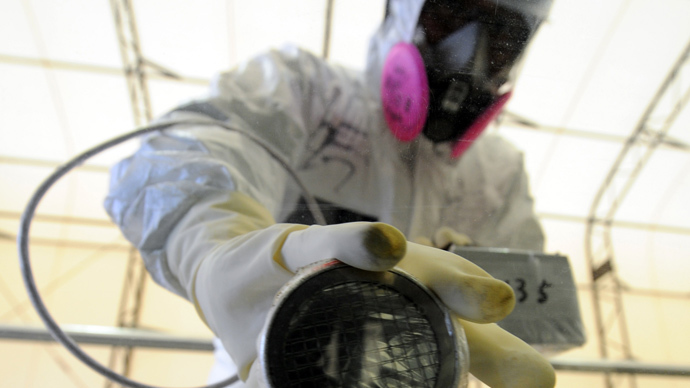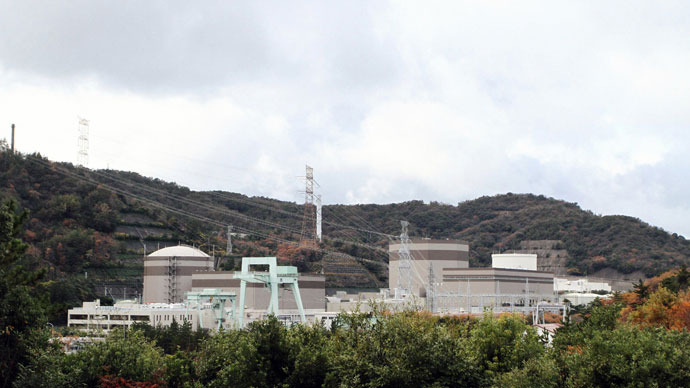Water samples taken at an underground passage below the Fukushima Daiichi nuclear power plant contain alarming levels of radiation which are comparable to those taken immediately after the catastrophe.
According to a Saturday statement by Tokyo Electric Power Company
(TEPCO), the tested water contains 2.35 billion becquerels of
cesium per liter, and the radioactive water is now seeping into
the sea. The findings were also evident from samples taken within
a 50-meter radius around the plant.
TEPCO’s specialists have hit a wall trying to solve the problem
of the leaking groundwater, which has persisted since 2011.
However, unlike then, they cannot tell what the source of the
newfound radioactivity is. The current explanation is that the
radioactive water that had been left in the underground trench
some two years ago is now mixing with the groundwater, which is
in turn contaminating the sea.
The current investigation started back in May, when specialists
registered a 17-fold hike in radiation levels compared to
December 2012. More tests immediately followed.
In July, scientists found high tritium levels – 20 per cent
higher than just two months before. At the beginning of the
month, cesium levels also went up by an astonishing 22 per cent
from the previous day. The legal limit of 90 becquerels per liter
was exceeded by around 22,000 becquerels.
On July 10, scientists warned about possible sea contamination,
although they had no evidence at the time.
On Monday, however, TEPCO discovered that radiation levels were
rising and falling together with the tide. This has led them to
their latest theory - that the leftover trench water from 2011 is
indeed mixing with the underground water that flows straight into
the Pacific.
The only theoretical solution at this point is to build a wall of
liquid glass between the nuclear reactors and the sea, siphoning
off contaminated water from the underground trench.
Steam has also been seen emerging from one of the damaged
reactors on three occasions, sparking further fears about the
state of the wrecked plant.
Meanwhile, TEPCO has had to sustain bad publicity after it was
revealed that it delayed publishing the summer study which
sparked these newfound fears - which were realized just days
after TEPCO reassured the public that the water was safely
enclosed. The government has labeled the company’s behavior as
“deplorable.”


